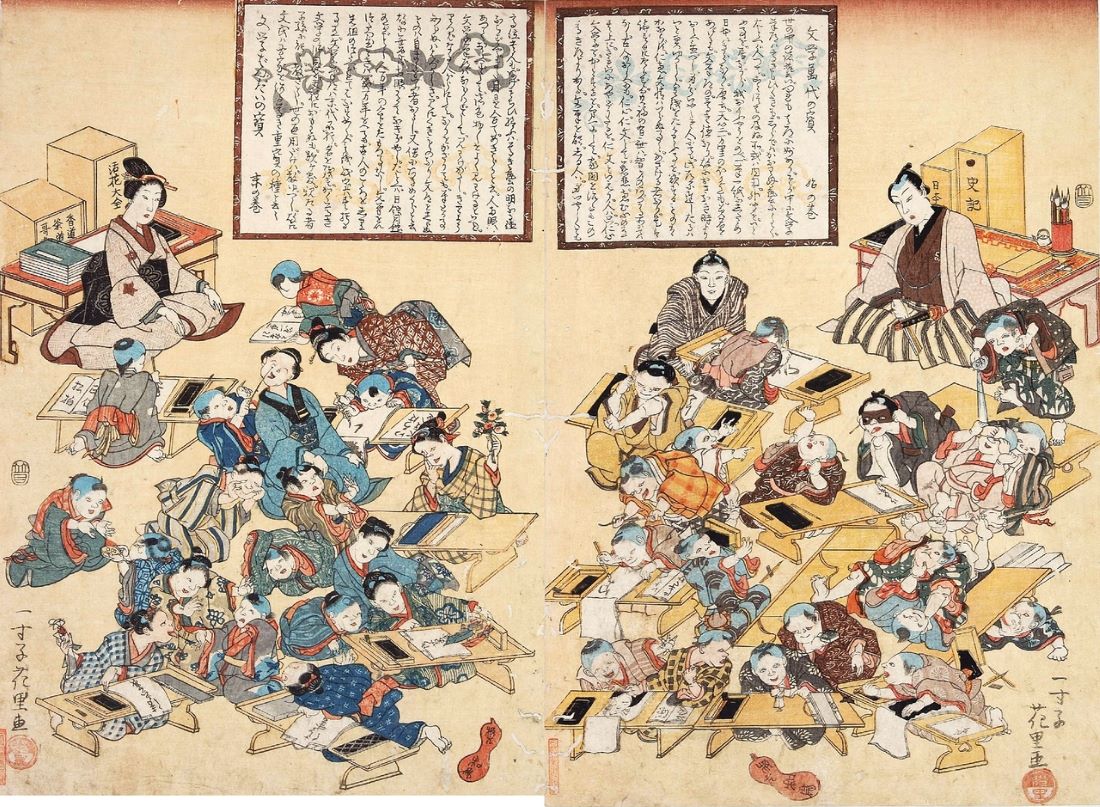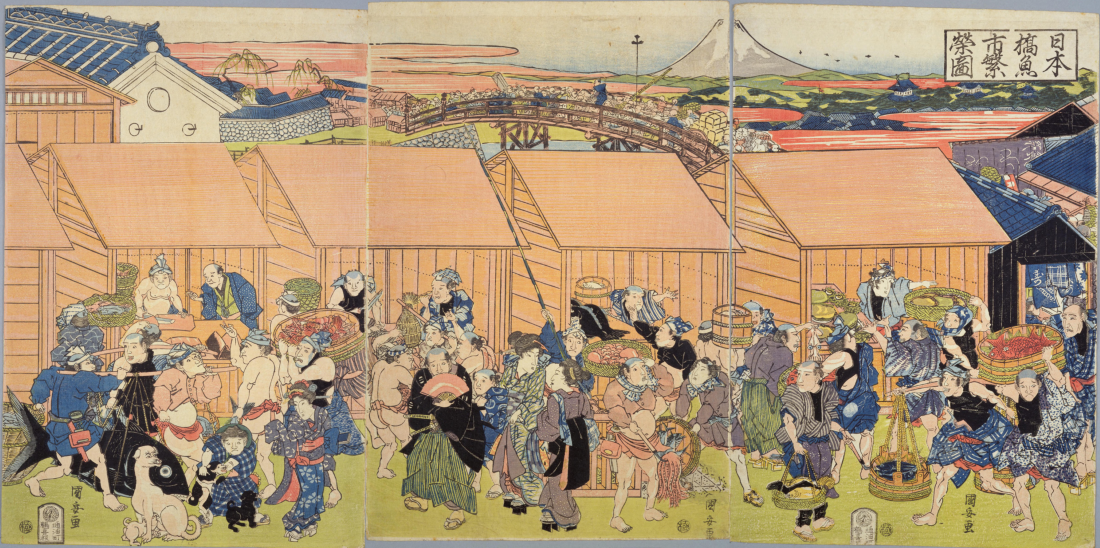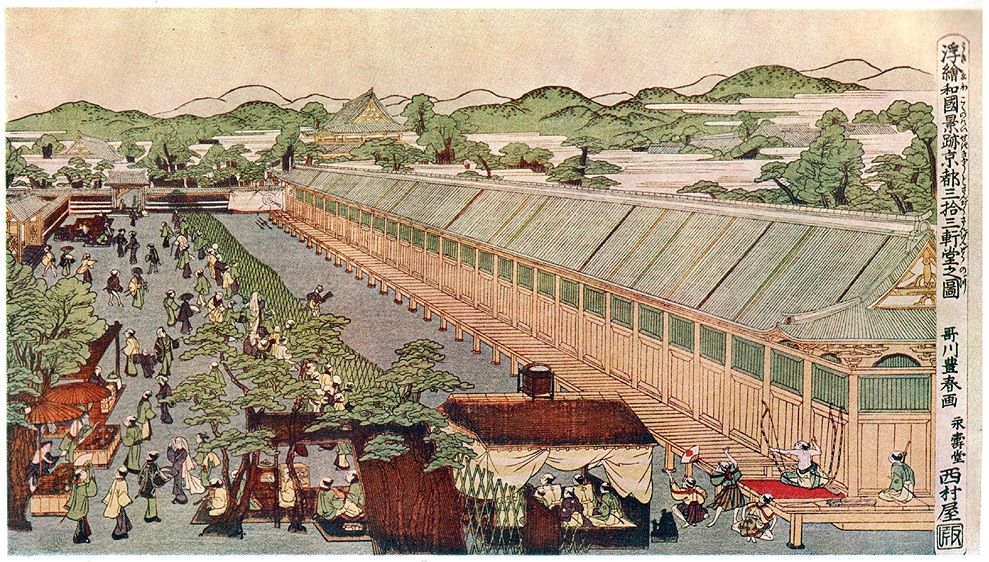The Edo period, also known as the Tokugawa period, was a remarkable era of relative peace that emerged from the mayhem and bloodshed of the Sengoku period. The age of Edo lasted an impressive 264 years from 1603 to 1867, during which Japan was ruled by the Tokugawa shogunate.

This era is characterized by economic growth, political stability, and internal peace, which allowed the country to flourish in various aspects.
Tokugawa Ieyasu, the first shogun of the Tokugawa family, established his government in Edo, which is now known as Tokyo. During this period, Japan was under the rule of the shogunate, and the country’s 300 regional daimyo.
Key Takeaways:
- The Edo period lasted from 1603 to 1867 in Japan.
- It was characterized by economic growth, political stability, and internal peace.
- The period emerged from the chaos of the Sengoku period.
- Japan was ruled by the Tokugawa shogunate during this period.
- The shogunate was supported by the country’s 300 regional daimyo.
- Edo, now known as Tokyo, was the center of the government during this period.
- The Edo period was a time of cultural growth and development.
- The period ended with the Meiji Restoration in 1868.
Historical Context

The Edo period marked a significant era in Japanese history after a period of bloody civil war and political betrayal and unrest. The country fell into many small feudal states, each ruled by a daimyo or feudal lord.
From the quagmire, the patient but wily Ieyasu made sure that the Tokugawa family emerged victorious from a series of battles and established a centralized government. The shogunate, which was a military dictatorship, brought peace and stability to Japan after centuries of war and political turmoil.
During the Edo period, Japan was closed to the outside world, and the shogunate strictly controlled foreign trade and travel, especially with the Christian west. This isolationist policy, known as sakoku, was intended to preserve Japanese culture and prevent foreign influence.
Despite the strict social hierarchy and limited social mobility, the Edo period was a time of cultural flourishing. The rise of the merchant class and the growth of urban centers led to the development of a vibrant popular culture. The arts, including painting, literature, and theater, thrived during this period, and many of the cultural traditions that are associated with Japan today, such as kabuki theater and ukiyo-e prints, emerged during the Edo period.
Social Structure

Edo society was a feudal society with strict social stratification, customs, and regulations intended to promote political stability. The social hierarchy was divided into four main classes: samurai, peasants, artisans, and merchants. The samurai class was the highest-ranking class, followed by peasants, artisans, and merchants.
The samurai class was made up of warriors who served the daimyo or feudal lords. They enjoyed many privileges, including the right to carry swords, wear distinctive clothing, and receive a stipend from their lord. The peasants were the largest class and were responsible for providing food for the population. They were heavily taxed and had few rights. The artisans were skilled craftsmen who produced goods such as pottery, textiles, and metalwork. They were highly respected for their skills but had limited social mobility. The merchants were the lowest-ranking class and were responsible for trade and commerce. They were often looked down upon by the other classes.
The social hierarchy was further divided into subcategories based on occupation and geographical location. For example, the samurai class was divided into three subcategories: hatamoto, gokenin, and tozama. The hatamoto were the highest-ranking samurai who served directly under the shogun, while the tozama were samurai who served under daimyo outside of the Tokugawa family. The peasants were also divided into subcategories based on their landholding status. The top-ranking peasants were known as the daimyo’s direct retainers, while the lowest-ranking peasants were landless laborers.
The strict social hierarchy of Edo society was reinforced by strict laws and regulations. For example, there were sumptuary laws that regulated what people could wear based on their social status. The wearing of certain colors and fabrics was restricted to certain classes, and violations of these laws were punishable by fines or even imprisonment. The strict social hierarchy of Edo society contributed to its stability but also led to social inequality and limited social mobility.
Culture and Arts

The period witnessed a flourishing of Japanese culture and arts and as you would expect the new capital city of Edo (now Tokyo) became the center of artistic and cultural activities. The thriving urban lifestyle played a significant role in shaping the cultural and artistic tastes of the period.
Merchants, craftsmen, and entertainers contributed to the development of the arts in Edo period Japan. Collaborative linked-verse parties and new forms of entertainment, such as kabuki theater, became staples of the urban lifestyle. Kabuki theater, in particular, was a popular form of entertainment that often featured historical and contemporary themes, and it was known for its elaborate costumes and makeup.
The Neo-Confucian culture of the Edo period had a significant influence on visual arts, which harked back to the Muromachi period’s fascination with Chinese culture. Artists experimented with realism, which was significantly influenced by exposure to Western models, and produced major new painting lineages. Traditional Japanese art forms, such as ukiyo-e woodblock prints, also flourished during the Edo period. Ukiyo-e prints depicted everyday life, landscapes, and historical events and were often mass-produced, making them accessible to a wider audience.
Another significant development during the Edo period was the emergence of haiku poetry. Haiku, a form of Japanese poetry consisting of three lines, became a popular literary form during the Edo period. Haiku poets often wrote about nature and everyday life, and their works were characterized by their simplicity and elegance.
Economy and Trade
The Edo period in Japan saw significant economic growth and development, which was largely due to the stability and peace brought about by the Tokugawa shogunate. This period was characterized by a feudal system, which was based on agriculture and the cultivation of rice. The samurai class, who were the ruling class during this period, were also involved in agriculture and were responsible for the management of the land.
During this period, Japan’s economy was largely self-sufficient, and trade with other countries was heavily restricted. However, there were some exceptions to this, and trade with China, Korea, and the Netherlands was allowed under strict conditions. These trade relationships were largely based on the exchange of luxury goods, such as silk, porcelain, and silver.
One of the most important developments in the economy during the Edo period was the growth of the merchant class. This class, which was previously considered to be at the bottom of the social hierarchy, became increasingly wealthy and powerful as a result of their involvement in trade and commerce. They played a crucial role in the development of Japan’s economy, and were responsible for the distribution of goods and the financing of various industries.
The Edo period also saw the development of a sophisticated financial system, which included the establishment of banks, insurance companies, and other financial institutions. This system was largely controlled by the merchant class, who used their wealth and influence to shape the economy and the financial landscape of Japan.
Foreign Relations

During the Edo period, Japan adopted a policy of sakoku, which means “closed country” or “chained country.” This policy was aimed at limiting foreign trade and relations with other countries, and it was enforced by the Tokugawa Shogunate. The policy was intended to prevent foreign influence and preserve Japanese culture and traditions.
Despite the policy of sakoku, Japan did maintain some foreign relations during the Edo period. The Dutch were allowed to trade with Japan through the port of Nagasaki, and they were the only Europeans allowed to do so. The Dutch traders were restricted to the island of Dejima, and they were not allowed to leave without permission. The Chinese were also allowed to trade with Japan, but their trade was limited to the port of Nagasaki as well.
Japan also had some trade relations with Southeast Asia during the Edo period. The Ryukyu Kingdom, which is now Okinawa, was a tributary state of Japan and had trade relations with China and Southeast Asia. The Shimazu clan, which ruled over Satsuma province, also had trade relations with Southeast Asia.
The period also saw some limited contact with the West. In 1844, the United States sent a diplomatic mission to Japan led by Commodore Matthew Perry. This mission was intended to open up trade between the United States and Japan. In 1853, Perry returned with a larger fleet and forced Japan to sign the Treaty of Kanagawa, which opened up two ports to American ships. This was the beginning of Japan’s modernization and opening up to the West.
End of the Edo Period
The Edo period came to an end with the Meiji Restoration and the Boshin War, which restored imperial rule to Japan. The Meiji Restoration period brought many changes to Japan’s political and social structure, and made Japan a modern nation-state.
During the period, Japan was ruled by the Tokugawa shogunate, which had established a centralized feudal system that brought peace and stability to the country. However, the shogunate’s rigid social hierarchy and isolationist policies had also led to economic stagnation and political unrest.
The Meiji Restoration, which began in 1868, aimed to modernize Japan and bring it into the world community. The restoration abolished the feudal system, established a constitutional monarchy, and introduced Western-style institutions and technology.
The Boshin War, which lasted from 1868 to 1869, was fought between the forces of the shogunate and those of the new imperial government. The imperial forces emerged victorious, and the shogunate was abolished. The emperor was restored to his position as the symbolic head of state, and a new era of modernization and industrialization began in Japan.




